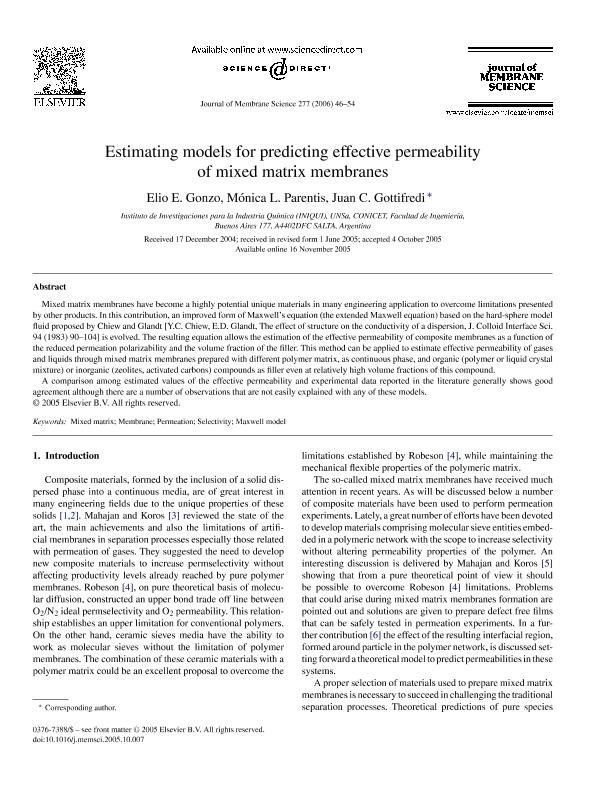Artículo
Estimating models for predicting effective permeability of mixed matrix membranes
Fecha de publicación:
06/2006
Editorial:
Elsevier Science
Revista:
Journal of Membrane Science
ISSN:
0376-7388
Idioma:
Inglés
Tipo de recurso:
Artículo publicado
Clasificación temática:
Resumen
Mixed matrix membranes have become a highly potential unique materials in many engineering application to overcome limitations presented by other products. In this contribution, an improved form of Maxwell's equation (the extended Maxwell equation) based on the hard-sphere model fluid proposed by Chiew and Glandt [Y.C. Chiew, E.D. Glandt, The effect of structure on the conductivity of a dispersion, J. Colloid Interface Sci. 94 (1983) 90-104] is evolved. The resulting equation allows the estimation of the effective permeability of composite membranes as a function of the reduced permeation polarizability and the volume fraction of the filler. This method can be applied to estimate effective permeability of gases and liquids through mixed matrix membranes prepared with different polymer matrix, as continuous phase, and organic (polymer or liquid crystal mixture) or inorganic (zeolites, activated carbons) compounds as filler even at relatively high volume fractions of this compound. A comparison among estimated values of the effective permeability and experimental data reported in the literature generally shows good agreement although there are a number of observations that are not easily explained with any of these models. © 2005 Elsevier B.V. All rights reserved.
Palabras clave:
Maxwell Model
,
Membrane
,
Mixed Matrix
,
Permeation
,
Selectivity
Archivos asociados
Licencia
Identificadores
Colecciones
Articulos(INIQUI)
Articulos de INST.DE INVEST.PARA LA INDUSTRIA QUIMICA (I)
Articulos de INST.DE INVEST.PARA LA INDUSTRIA QUIMICA (I)
Citación
Gonzo, Elio Emilio; Parentis, Monica Liliana; Gottifredi, Juan Carlos Agustin; Estimating models for predicting effective permeability of mixed matrix membranes; Elsevier Science; Journal of Membrane Science; 277; 1-2; 6-2006; 46-54
Compartir
Altmétricas




